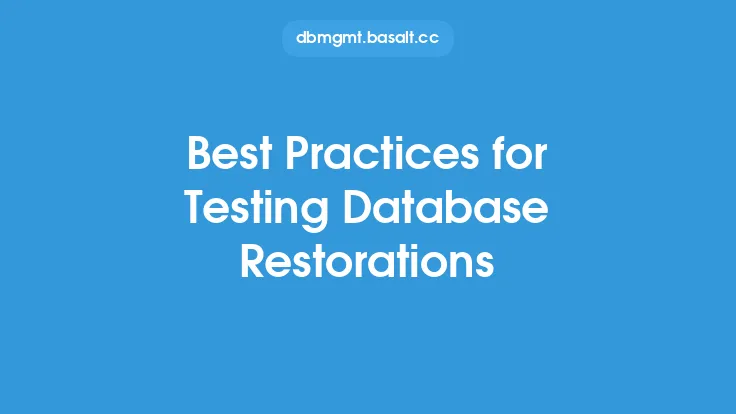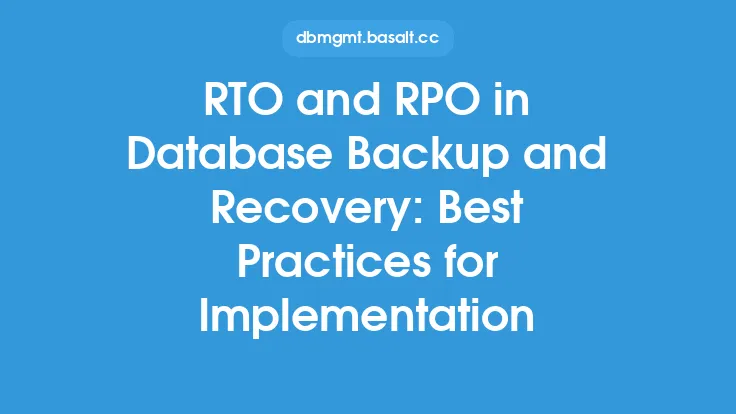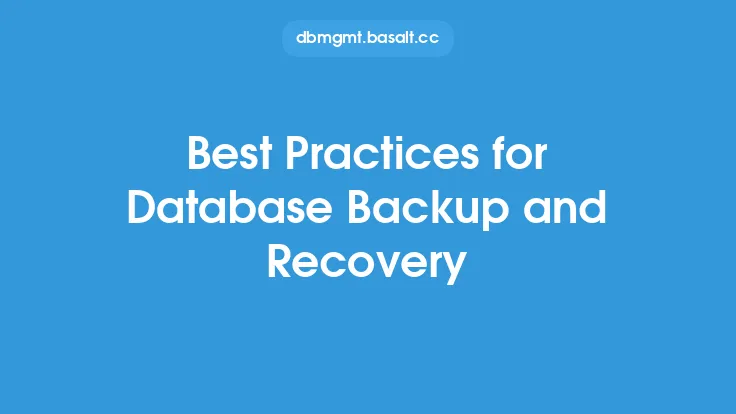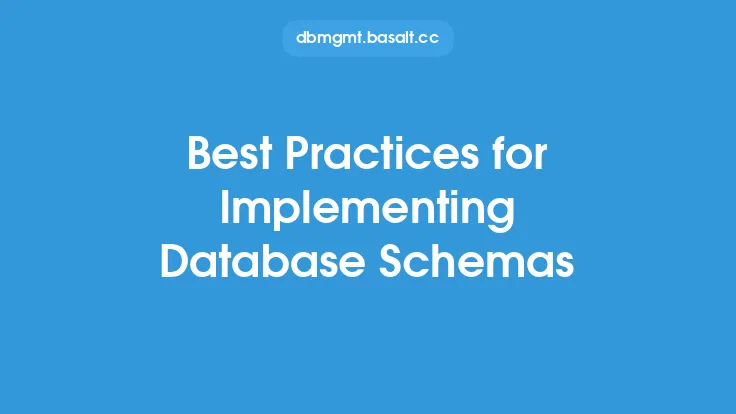Database recovery testing is a critical process that ensures the integrity and availability of an organization's data in the event of a disaster or system failure. It involves verifying that the database can be restored to a consistent state, with minimal data loss, and that the recovery process can be completed within a reasonable timeframe. In this article, we will discuss the best practices for database recovery testing, highlighting the key steps and considerations that database administrators (DBAs) should take to ensure the reliability and effectiveness of their recovery processes.
Introduction to Database Recovery Testing
Database recovery testing is an essential component of a comprehensive disaster recovery plan. It involves simulating various failure scenarios, such as hardware failures, software crashes, or natural disasters, to test the database's ability to recover from these events. The goal of recovery testing is to ensure that the database can be restored to a consistent state, with minimal data loss, and that the recovery process can be completed within a reasonable timeframe. This requires careful planning, execution, and validation of the recovery process to ensure that it meets the organization's recovery time objectives (RTOs) and recovery point objectives (RPOs).
Pre-Recovery Testing Considerations
Before conducting database recovery testing, there are several considerations that DBAs should take into account. These include:
- Identifying the scope of the recovery test, including the databases, systems, and applications that will be involved
- Defining the recovery objectives, including the RTOs and RPOs
- Developing a detailed test plan, including the scenarios that will be tested, the testing methodology, and the expected outcomes
- Ensuring that the necessary resources, including personnel, equipment, and budget, are available to support the testing process
- Coordinating with other teams, such as IT, development, and quality assurance, to ensure that the testing process is integrated with other business continuity planning activities
Types of Database Recovery Testing
There are several types of database recovery testing that DBAs can conduct, including:
- Full recovery testing, which involves restoring the entire database from backup
- Partial recovery testing, which involves restoring a subset of the database, such as a single table or schema
- Point-in-time recovery testing, which involves restoring the database to a specific point in time
- Disaster recovery testing, which involves simulating a disaster scenario, such as a site failure or natural disaster, to test the database's ability to recover from a catastrophic event
- Application-level recovery testing, which involves testing the recovery of specific applications or services that rely on the database
Best Practices for Database Recovery Testing
To ensure the effectiveness and reliability of database recovery testing, DBAs should follow several best practices, including:
- Developing a comprehensive test plan that includes multiple scenarios and testing methodologies
- Using automated testing tools to streamline the testing process and reduce the risk of human error
- Conducting regular testing, such as quarterly or bi-annually, to ensure that the recovery process remains effective and up-to-date
- Validating the recovery process, including verifying the integrity and consistency of the recovered data
- Documenting the testing process, including the test plan, test results, and any issues or defects that are identified
- Continuously reviewing and updating the recovery testing process to ensure that it remains aligned with changing business requirements and IT infrastructure
Tools and Technologies for Database Recovery Testing
There are several tools and technologies that DBAs can use to support database recovery testing, including:
- Backup and recovery software, such as Oracle RMAN or Microsoft SQL Server Backup
- Automated testing tools, such as Oracle Enterprise Manager or Microsoft System Center
- Virtualization technologies, such as VMware or Hyper-V, which can be used to create virtual test environments
- Cloud-based services, such as Amazon Web Services or Microsoft Azure, which can be used to create scalable and on-demand test environments
- Open-source tools, such as MySQL or PostgreSQL, which can be used to support database recovery testing
Challenges and Limitations of Database Recovery Testing
Despite the importance of database recovery testing, there are several challenges and limitations that DBAs may encounter, including:
- Limited resources, including personnel, equipment, and budget
- Complexity of the database environment, including multiple databases, systems, and applications
- Risk of data loss or corruption during the testing process
- Difficulty in simulating realistic failure scenarios
- Limited visibility into the recovery process, making it difficult to identify and troubleshoot issues
- Balancing the need for thorough testing with the need to minimize downtime and disruption to business operations
Conclusion
Database recovery testing is a critical process that ensures the integrity and availability of an organization's data in the event of a disaster or system failure. By following best practices, such as developing a comprehensive test plan, using automated testing tools, and conducting regular testing, DBAs can ensure the effectiveness and reliability of their recovery processes. Additionally, leveraging tools and technologies, such as backup and recovery software, automated testing tools, and virtualization technologies, can help to streamline the testing process and reduce the risk of human error. While there are challenges and limitations to database recovery testing, the benefits of ensuring data availability and integrity make it an essential component of any comprehensive disaster recovery plan.





